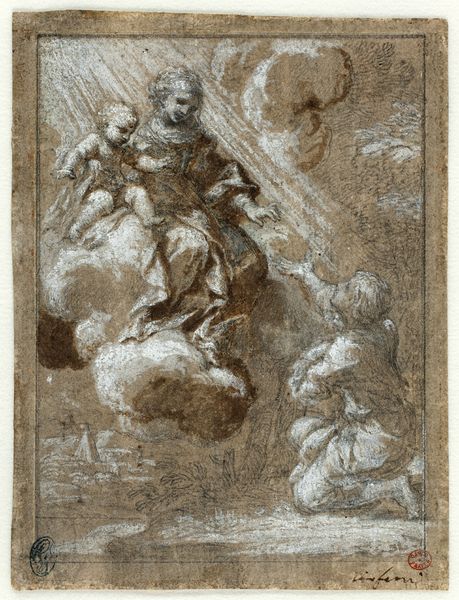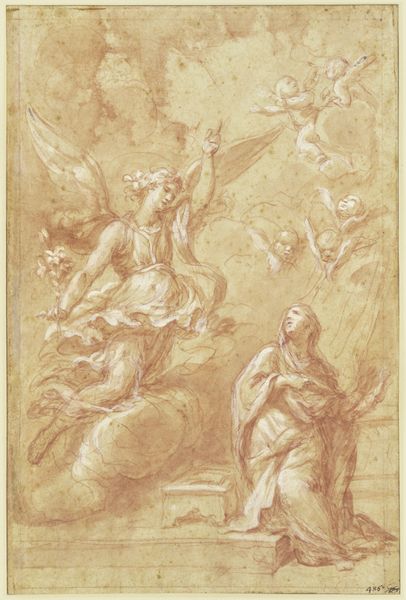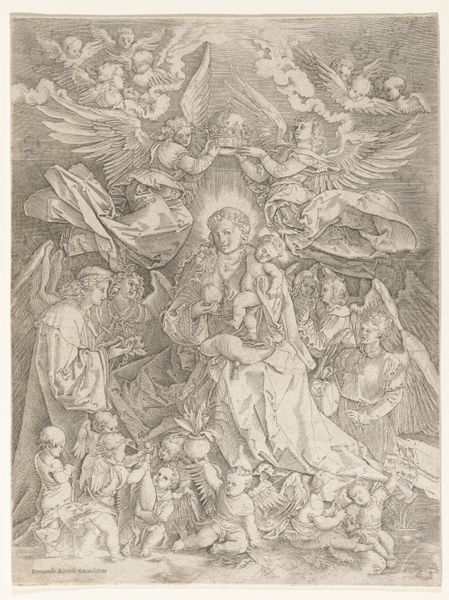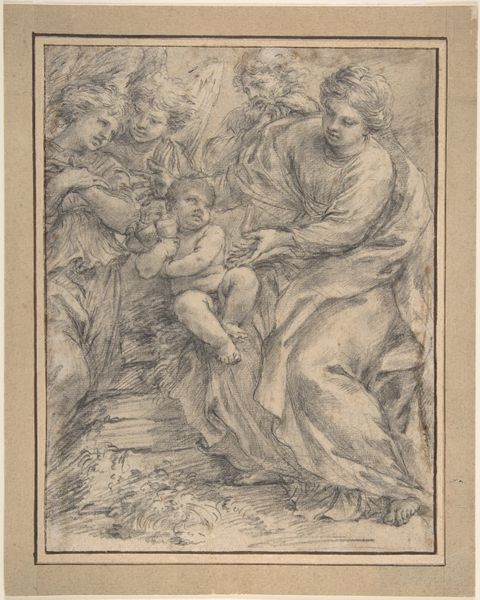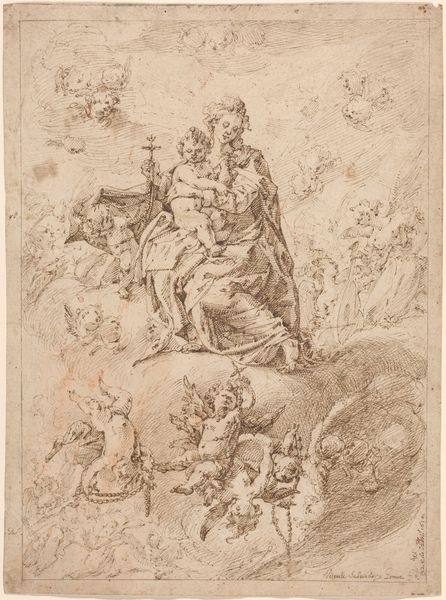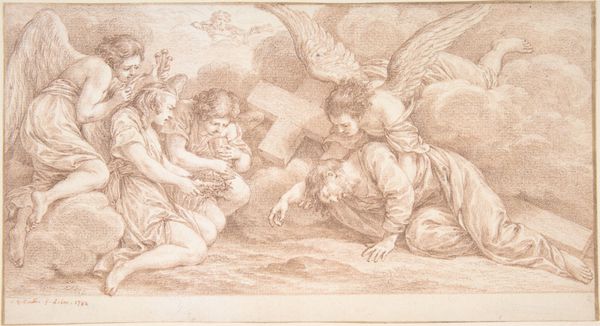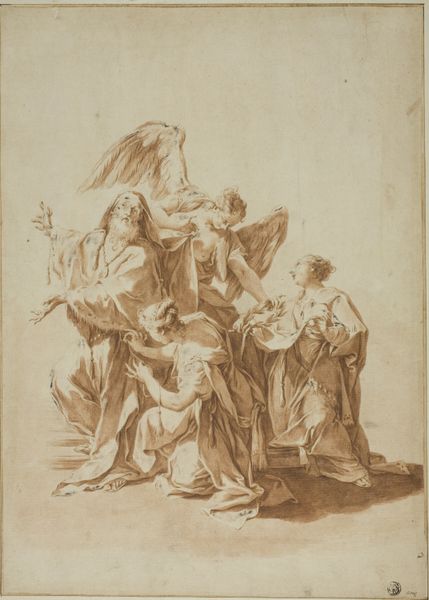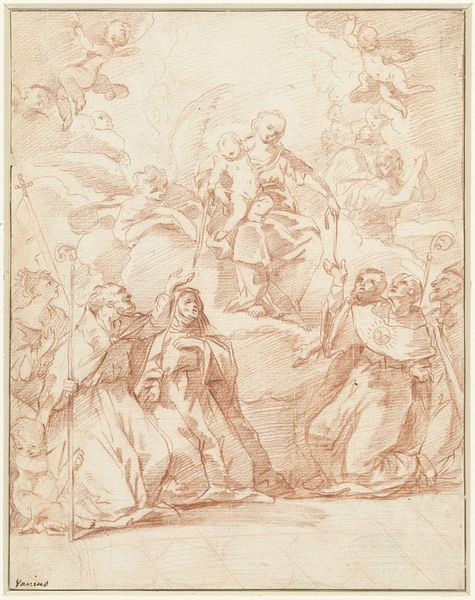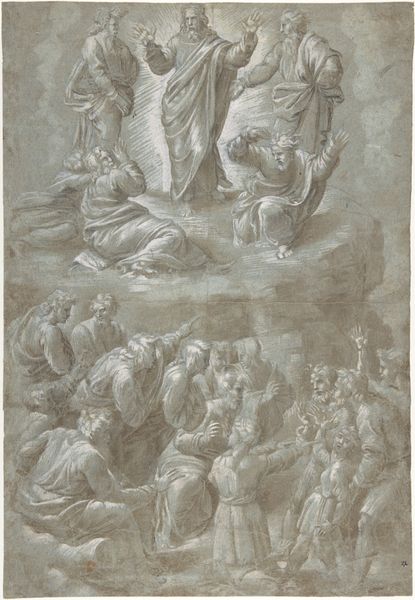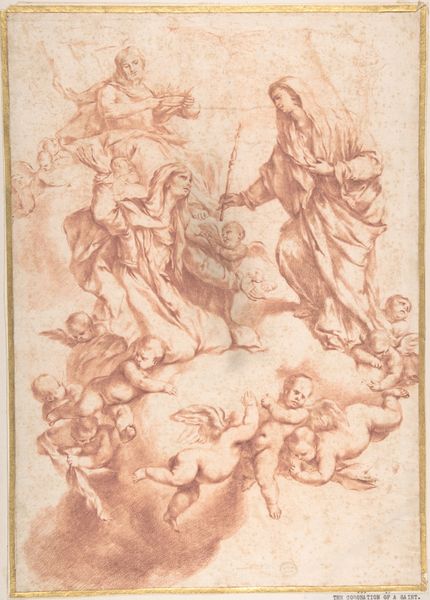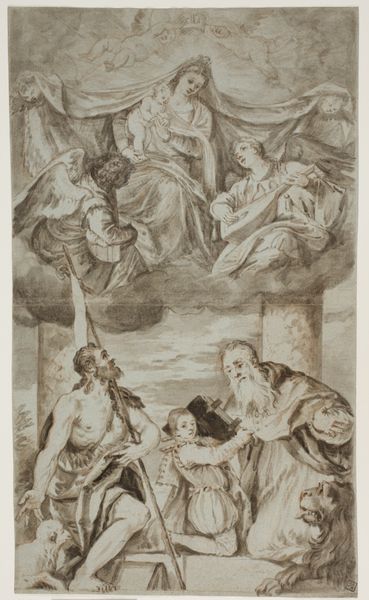
drawing, dry-media, ink, pen, charcoal, pastel
#
drawing
#
charcoal drawing
#
figuration
#
dry-media
#
ink
#
pencil drawing
#
pen
#
charcoal
#
pastel
#
history-painting
Dimensions: 243 mm (height) x 190 mm (width) (bladmaal)
Curator: The soft hues in this drawing immediately evoke a sense of intimacy and quiet contemplation. Editor: We're looking at "Joseph's Dream," an 18th-century work housed here at the SMK. It's a drawing executed in dry media like pen, ink, charcoal and pastel—likely a study for a larger history painting. Curator: It's fascinating how the artist uses red chalk, perhaps, to render the figures. It lends a warmth, an earthy quality to this divine moment. The loose strokes really speak to the preliminary nature of a study, the artist working out the composition and lighting. Editor: Indeed. The drawing depicts the biblical scene where an angel appears to Joseph in a dream, warning him to flee to Egypt with Mary and the infant Jesus. The choice to represent such a significant moment emphasizes the power of faith and divine intervention in everyday life during this era. Religious institutions held power over civic ones during the era. Curator: And it is clear this choice reflects artistic trends from that era. Looking closely, you see that the artist utilizes hatching and cross-hatching to build up tonal values, almost sculptural forms emerging from the page. Was this paper readily available or was there some scarcity involved in using such a large sheet for a preparatory work? Editor: Material accessibility in 18th-century art certainly dictated production. Artists relied on workshops and patronage. These contexts controlled narrative and material choices available for making art. But notice how the ethereal quality is captured perfectly; that would be crucial to the patron. Curator: Yes, it all goes to illustrate the larger socio-political structures informing artmaking during this period. And I am moved to see the fragility of line suggesting movement within a rather static scene. Editor: Well said. These early sketches help us appreciate the final, intended impact an artist might have wished to achieve. Curator: Considering how art and society influence one another through shared processes, these historical explorations can really bring this museum to life. Editor: Absolutely; studying artworks like "Joseph’s Dream" in the context of their production and reception is incredibly important for understanding both their time and ours.
Comments
No comments
Be the first to comment and join the conversation on the ultimate creative platform.

